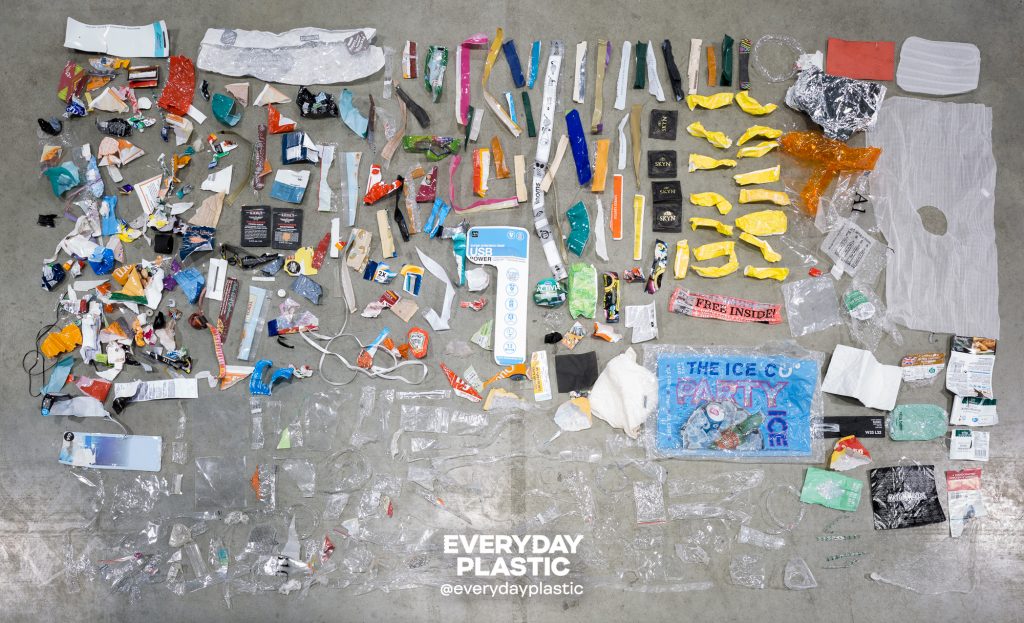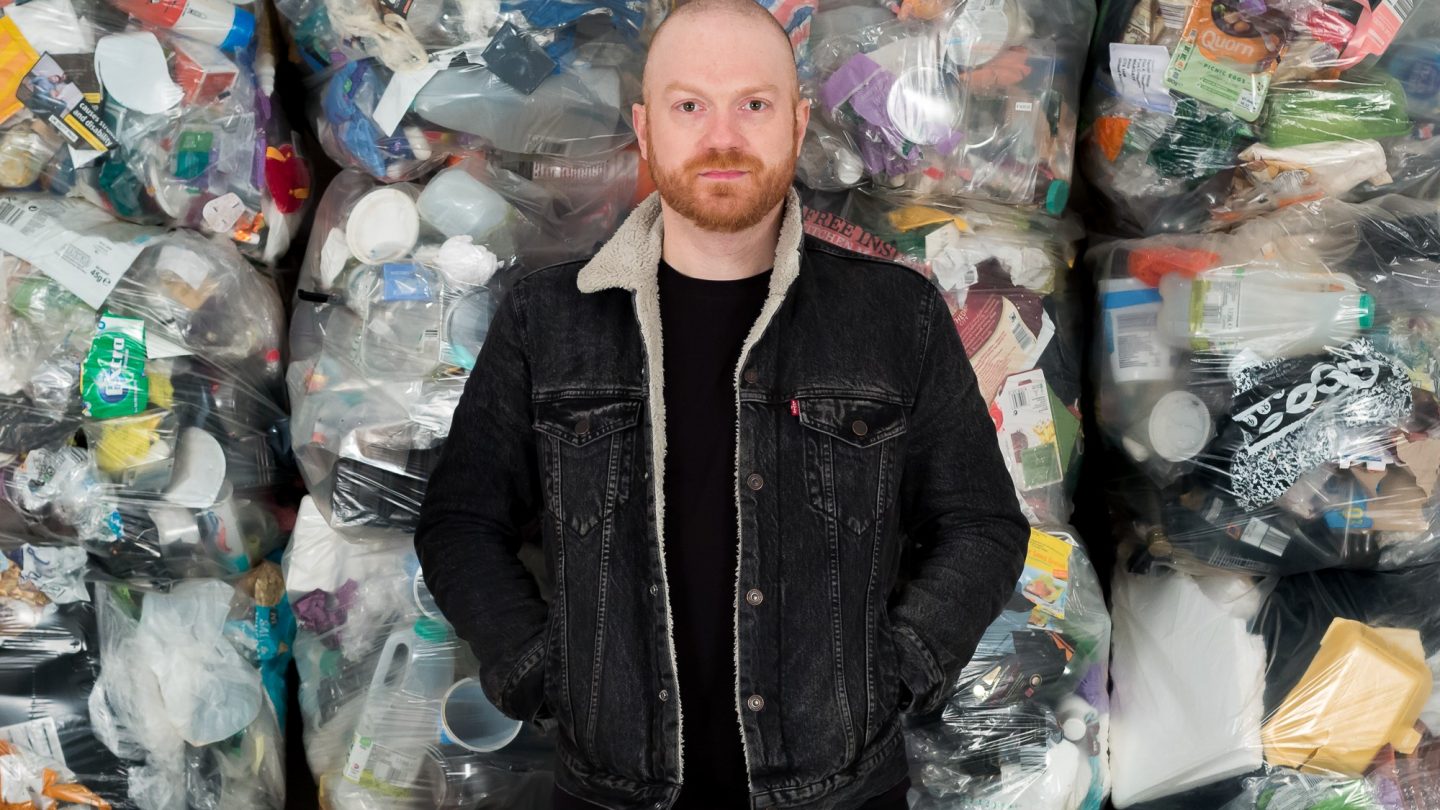Some of the most brilliant plastic projects come about from a simple lightbulb moment – and Daniel Webb’s Everyday Plastic is one of them. A pioneer in the true sense – Daniel was frustrated by what he saw so he used his initiative to do something about it.
We speak to Daniel to find out how Everyday Plastic came about, what it’s achieved so far, and where he plans to take it next…
In a nutshell, tell us about yourself and your work etc…
In 2016, I moved to the coastal town of Margate, Kent. Because of the swathes of plastic I was seeing washed up on the beach, I’d become more conscious of the massive amounts of packaging I was presented with in the supermarket. Twinned with the fact that I wasn’t offered any recycling at my new home, there seemed to be no way to dispose of my plastic responsibly.
So, I decided to conduct a little experiment… and store all of the plastic waste I generated for a year.

Why is the plastic issue so important to you?
It teaches us about pollution on a very surface level, but more importantly helps us to understand our consumption habits and behaviours. This is not just an environmental problem, it’s a social, cultural, political and economic one.
What are you doing to tackle plastic pollution and what problems and successes have you had along the way?
After taking 22 bags filled with plastic out of my spare room, I counted, categorised, analysed and photographed every piece. In 2018, I launched Everyday Plastic when I was commissioned to make a giant mural before co-authoring What we throw away and where it goes – a seminal report based on rigorous analysis of my collection.

Having collaborated with earth scientist Dr Julie Schneider, the report has had over 9,000 downloads. I now go and talk to schools, businesses, communities and at events, sharing my experience and what I’ve learned along the way.
What would you say to convince others to take action on plastic?
This is an urgent issue which is deep, complex and multi-layered. I think that the awareness around the plastic problem has accelerated movements such as Extinction Rebellion and Greta Thunberg’s School Strike For Climate, thrusting climate change on to the mainstream news agenda.
Plastic pollution and climate change are inherently connected – a result of petrochemical extraction and production that cannot continue.
What do you think your industry/peers should be doing to make a difference collectively?
I really believe that businesses can lead the change on reducing the amount of plastic in our lives. Right now, there is a fantastic opportunity for organisations to pitch themselves as leaders of change. They can add another angle to their story by talking about their sustainability and environmental credentials.
They need to research their solutions extensively though, as customers are getting savvy to greenwashing. Sadly, our government move at a snail’s pace when it comes to implementing major changes. Their heads and hearts are just not in it.
Can you tell us about some other inspiring plastic pioneers or projects that you admire, and why?
So many! I love the work that Amanda is doing at Less Plastic. It’s a completely comprehensive campaign which has been really well formulated. Most importantly, it’s accessible to everyone from school kids to CEOs.
What have you got planned for the future?
Over the next 12 months, I’m going to be launching the Everyday Plastic Survey. Based on my experiment, this is a nationwide campaign that encourages people from all corners of the UK to collect their plastic waste for a week.
At the end of the week, each participant will enter their results into a database via a website or app, and receive a comprehensive breakdown of their personal plastic footprint. So keep your eyes out for that!

How can people find out more about your plastic-free quest?
You can visit my website at everydayplastic.org or my Instagram @everydayplastic
Read all our Plastic Pioneer interviews here – we’d love to hear your suggestions for people or organisation to feature in future. Contact us with any suggestions.




